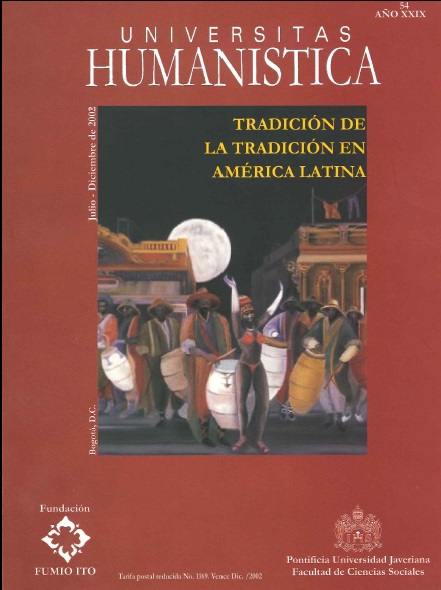Abstract
El cuadro de costumbres le sirvió al escritor colombiano Tomás Carrasquilla (1859-1940) de marco paradigmático para sus cuentos realistas que satirizaban los personajes típicos y las costumbres regionales de Antioquia con un tono a la vez afectuoso e irónico. Al cultivar alternativamente la crónica costumbrista llamada Acuarelas y la ficción satírica, la escritura de Carrasquilla reflejaba a su vez la pugna entre tradición y cambio tal y como se manifestaba en el contorno local de la región y en Medelíín, su capital, a finales del siglo XIX y comienzos del próximo siglo. Entre los más destacados ejemplos de aquella interdependencia discursiva entre el cuadro de costumbres y el cuento satírico se incluían "Simón el mago" (1890), "En la diestra de Dios Padre" (1897), "San Antoñito" (1899), y "Esta sí es bola" (1921). Los sobredichos relatos parodiaban el lenguaje popular antioqueño a la vez que se burlaban de las idiosincrasias regionales. Además, constituían verdaderos espejos literarios de una latente crisis de modernidad entre valores tradicionales ya caducos y nuevas circunstancias socio-económicas que se tornaban predominantes paulatina e inevitablemente.

This journal provides immediate open access to its content on the principle that making research freely available to the public, encourages greater global exchange of knowledge.
The journal Universitas Humanística is registered under a Creative Commons Attribution 4.0 International Public License. Thus, this work may be reproduced, distributed, and publicly shared in digital format, as long as the names of the authors and Pontificia Universidad Javeriana are acknowledged. Others are allowed to quote, adapt, transform, auto-archive, republish, and create based on this material, for any purpose (even commercial ones), provided the authorship is duly acknowledged, a link to the original work is provided, and it is specified if changes have been made. Pontificia Universidad Javeriana does not hold the rights of published works and the authors are solely responsible for the contents of their works; they keep the moral, intellectual, privacy, and publicity rights.
Approving the intervention of the work (review, copy-editing, translation, layout) and the following outreach, are granted through an use license and not through an assignment of rights. This means the journal and Pontificia Universidad Javeriana cannot be held responsible for any ethical malpractice by the authors. As a consequence of the protection granted by the use license, the journal is not required to publish recantations or modify information already published, unless the errata stems from the editorial management process. Publishing contents in this journal does not generate royalties for contributors.


